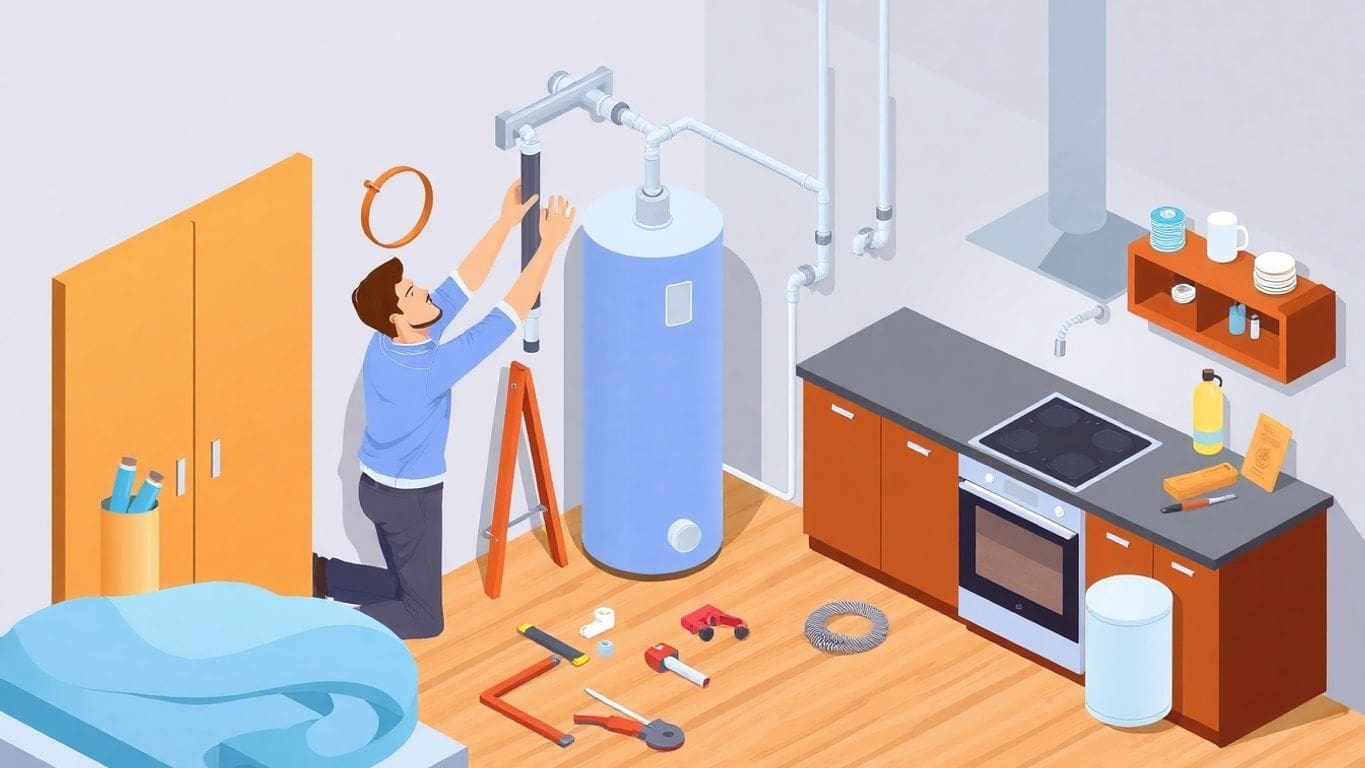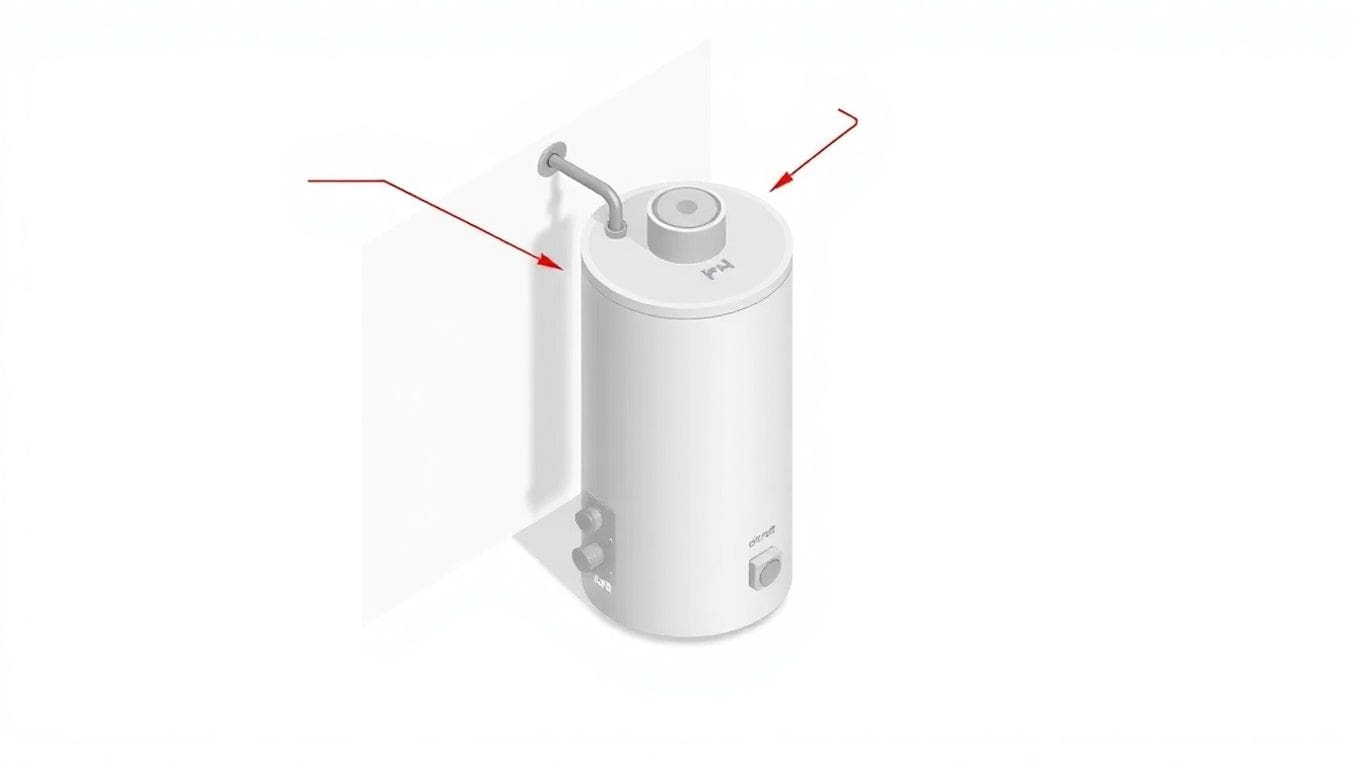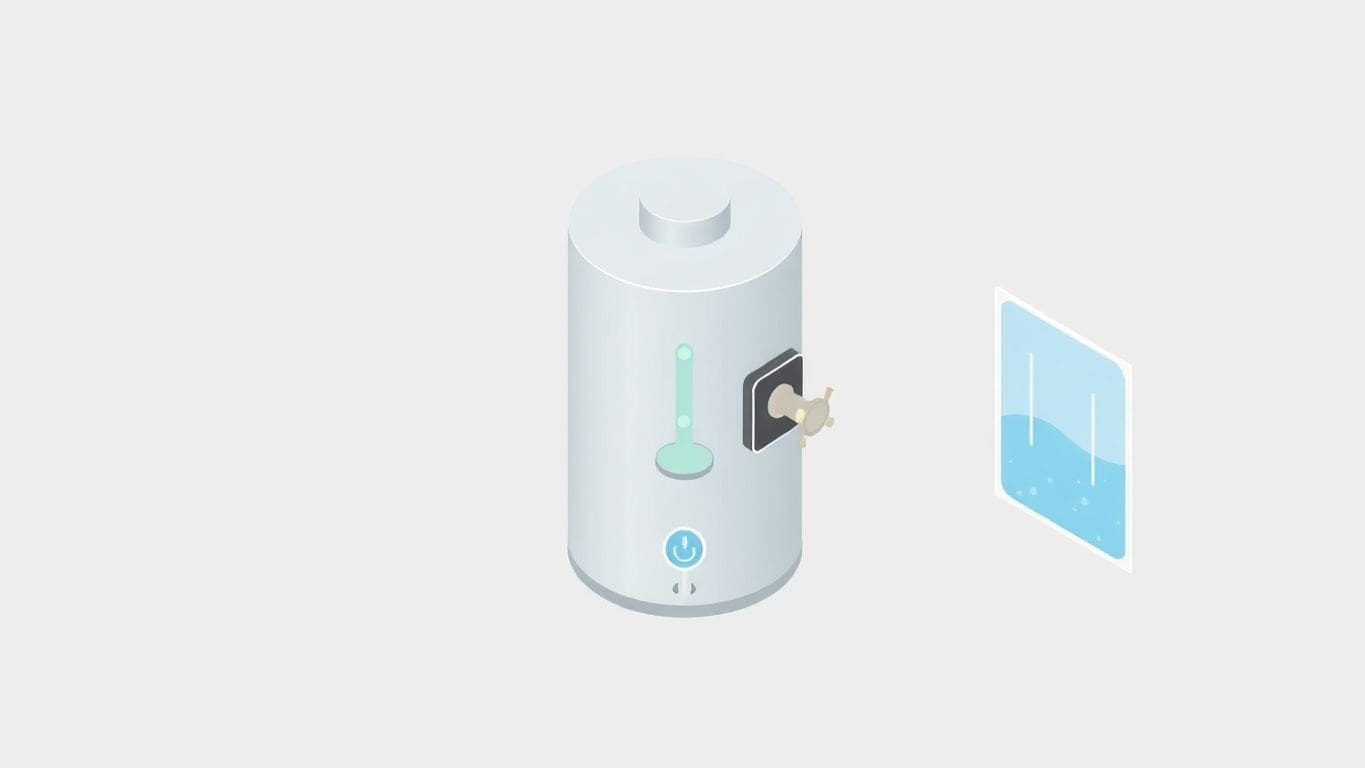
Maintaining your water heater is essential for ensuring it runs efficiently and lasts as long as possible. Many homeowners overlook this task, but regular upkeep can prevent costly repairs and extend the life of your unit. In this article, we’ll explore how often to do water heater maintenance and share some important tips to keep your water heater in top shape.
Think of your water heater like a car. If you don’t change the oil or get tune-ups, it won’t last as long. Regular maintenance helps your water heater run better and last longer. It also helps you avoid big, expensive problems down the road. A little bit of work now can save you a lot of money and trouble later. Plus, a well-maintained water heater uses less energy, which lowers your utility bills. It’s a win-win!
Sometimes, your water heater needs more attention than usual. If you notice any of these signs, it’s time to step up your maintenance routine:
Ignoring these signs can lead to bigger problems, like leaks or even a complete water heater failure. So, pay attention to what your water heater is telling you!
So, how often should you actually do maintenance? A good rule of thumb is to flush your water heater at least once a year. However, depending on the factors mentioned above, you might need to do it more often. Here’s a simple guideline:
| Condition | Frequency |
|---|---|
| Normal Water | Once a year |
| Hard Water | Every six months |
| Older Water Heater | Every six months to a year |
Also, remember to assess its condition regularly. By following these tips, you can keep your water heater running smoothly for years to come.
Taking care of your water heater is important. It helps it last longer and work better. Here are some things you should do to keep it in good shape.
Flushing your water heater gets rid of sediment. Sediment is like dirt and minerals that build up in the tank over time. If you don’t flush the tank, the sediment can make your water heater less efficient and even damage it.
Here’s how to flush the tank:
Flushing the tank once a year can really help your water heater last longer. It’s a simple task that can save you money in the long run.
The anode rod is a metal rod inside the tank. It helps prevent rust and corrosion. It basically sacrifices itself so the tank doesn’t rust. You should check the anode rod every few years and replace it if it’s worn out. If the anode rod is gone, the tank itself will start to rust.
To check it:
The temperature and pressure relief (TPR) valve is a safety device. It releases pressure if it gets too high inside the tank. If the pressure gets too high, the tank could explode. You should test the TPR valve once a year to make sure it’s working right.
Here’s how to test it:
Your water heater works hard all year. Different seasons can bring different challenges. Here’s how to keep it in top shape, no matter the weather.
Winter can be tough on your water heater. Colder water coming into your home means your heater has to work harder to warm it up. Here’s what to do:
Preparing your water heater for winter is like getting your car ready for a road trip. A little preparation can prevent big problems down the road.
Summer is a good time to do some basic maintenance. The water coming into your home is usually warmer, so your water heater doesn’t work as hard. This is a good time to:
Spring is a great time for a more thorough checkup. After the heavy use of winter, your water heater might need some extra attention. Consider these steps:
Your water heater works hard to give you hot water. Sometimes, things can go wrong. Let’s look at some common problems and how to fix them.
Sediment is like dirt that settles at the bottom of your water heater tank. It can make your water heater less efficient and even damage it. You might hear popping or rumbling sounds. These noises often mean you have sediment buildup.
Here’s how to check for sediment:
If you find sediment, you’ll need to flush your tank. Flushing the tank gets rid of the sediment and helps your water heater work better.
Rust and corrosion can cause big problems for your water heater. Rust can make your water look dirty. Corrosion can weaken the tank and cause leaks.
Here’s what to look for:
If you see rust, check the anode rod. This rod protects your tank from rusting. If the anode rod is gone, you need to replace it. If the tank is badly rusted, you might need a new water heater.
Not enough hot water is a common problem. It could be a simple fix or a sign of a bigger issue.
Here are some things to check:
If you still don’t have enough hot water after checking these things, you might need a bigger water heater. Or, there could be a problem with the thermostat. It’s best to call a professional if you’re not sure what to do. They can help you figure out the problem and fix it safely.
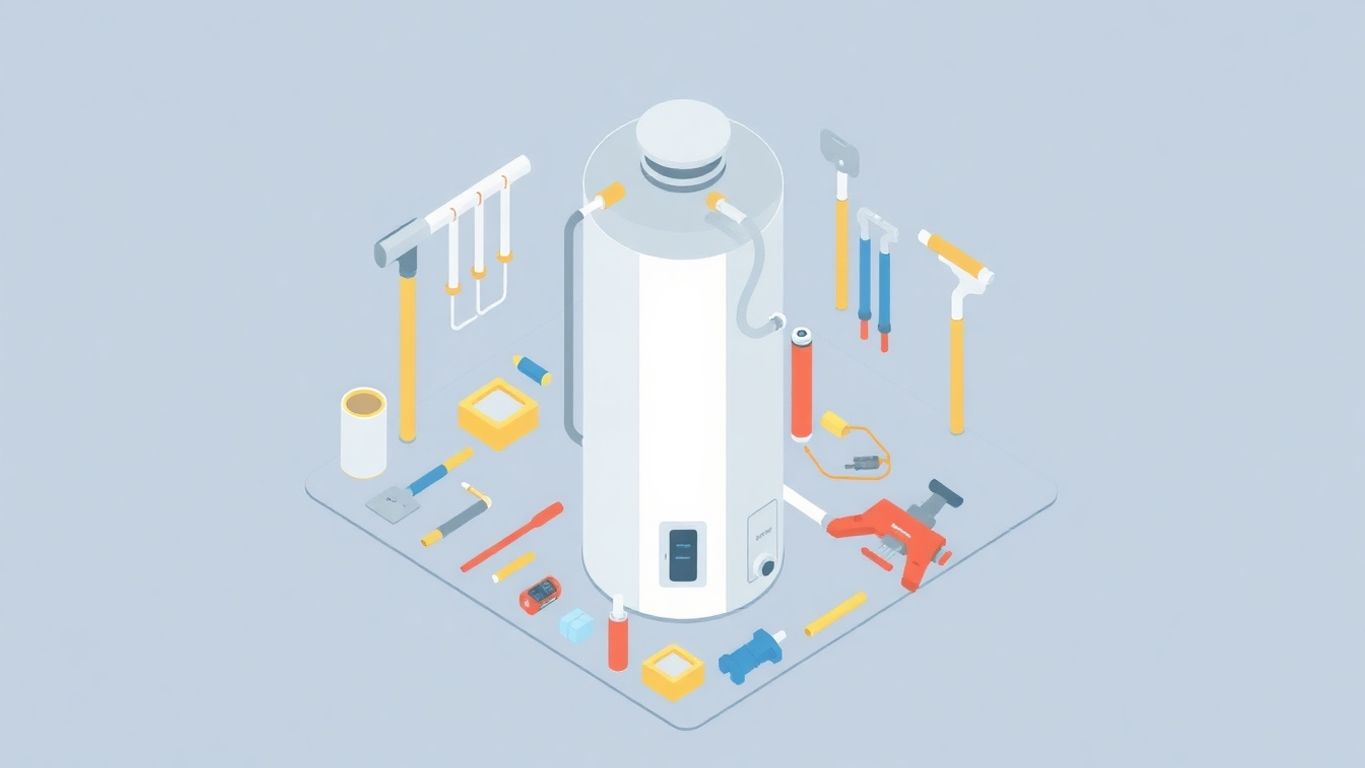
Taking care of your water heater is important. You might wonder if you can do it yourself or if you need to call a professional. Some tasks are easy to handle, while others are better left to someone with more experience. Let’s break down what you can do and when to call for help.
Sometimes, water heater problems are too big to handle on your own. It’s best to call a professional if:
Calling a professional can save you time, stress, and potential safety hazards. They have the tools and knowledge to fix problems correctly and safely.
There are several things you can do yourself to keep your water heater in good shape. These tasks are generally safe and easy:
Even if you do some maintenance yourself, it’s a good idea to have a professional inspect your water heater regularly. Here’s why:
| Task | DIY Friendly | Professional Recommended | Frequency |
|---|---|---|---|
| Flushing the Tank | Yes | No | Annually |
| TPR Valve Testing | Yes | No | Annually |
| Anode Rod Replacement | No | Yes | Every 3-5 Years |
| Temperature Adjustment | Yes | No | As Needed |
| Professional Inspection | No | Yes | Every 2-3 Years |
I think you should flush your water heater at least once a year. If you have hard water, maybe do it every six months. Hard water has lots of minerals that can build up. Flushing helps keep your water heater working well.
Okay, so here’s how I usually flush my water heater:
Flushing your water heater is a good idea. Here’s why:
I know it sounds like a pain, but trust me, flushing your water heater is worth it. It’s a simple way to keep your water heater running smoothly and avoid bigger problems down the road. Plus, it can save you money on your energy bill!
Want to save money and help the environment? Keeping your water heater energy-efficient is key. It’s not hard, and it makes a real difference. Let’s look at some simple things you can do.
Did you know that the factory setting on most water heaters is higher than needed? You can save energy by turning it down. A good target temperature is 120°F (49°C).
Here’s how to adjust the temperature:
Lowering the temperature even a little can save you money each month. It also reduces the risk of scalding.
Your water heater loses heat all the time, especially in the winter. Insulating it helps keep the heat in, so your heater doesn’t have to work as hard. You can buy a special insulation blanket for water heaters at most hardware stores.
Here’s how to insulate your water heater:
Important: Don’t cover the top of a gas water heater. This can be a fire hazard.
If your water heater is old, it might be time to replace it. Newer models are much more energy-efficient than older ones. When you’re shopping for a new water heater, look for the Energy Star label. This means it meets certain standards for energy efficiency. Tankless water heaters are also a good option, as they only heat water when you need it.
Here are some things to consider when choosing a new water heater:
| Feature | Benefit |
|---|---|
| Energy Star | Lower energy bills |
| Tankless | On-demand hot water, saves energy |
| Proper Insulation | Reduces heat loss, saves even more energy |
Your water heater works hard to give you hot water every day. Because it works so hard, problems can happen. Knowing the warning signs can help you fix small issues before they become big, expensive problems. Let’s look at some things to watch out for.
If you hear strange noises coming from your water heater, it’s a sign something isn’t right. These noises are often caused by sediment buildup in the tank. Here are some common sounds and what they might mean:
If you hear any of these noises, it’s a good idea to check your water heater. Ignoring them could lead to bigger problems later on. You might need to flush the tank to remove sediment or call a plumber to check the pipes.
The color of your hot water can tell you a lot about the condition of your water heater. If your hot water isn’t clear, there could be a problem. Here’s what different colors might mean:
If you see discolored water, try running the cold water to see if it’s also discolored. If only the hot water is affected, the problem is likely in your water heater. You may need to check the anode rod or call a plumber.
If your hot water temperature changes a lot, it could be a sign of a problem. You might get hot water at first, but then it quickly turns cold. Or, the water might not get as hot as it used to. Here are some things that can cause temperature changes:
| Problem | Possible Cause | Solution |
|---|---|---|
| Not enough hot water | Faulty thermostat, bad element | Replace thermostat or heating element |
| Water too hot | Thermostat set too high | Adjust thermostat setting |
| Fluctuating temps | Sediment buildup | Flush your water heater |
If you notice temperature changes, check the thermostat setting first. If that doesn’t fix the problem, you might need to have a professional look at your water heater. Keeping an eye on these signs can help you catch problems early and keep your water heater working well. If you’re thinking about upgrading components, make sure to consult a professional.
It’s easy to forget about your water heater until something goes wrong. But, like your car, it needs regular check-ups to run well. Making a maintenance schedule can help you keep your water heater in good shape and avoid big problems later on. Let’s look at how to set one up.
Even small monthly checks can make a big difference. Here’s what you can do:
Once a year, you’ll want to do a more thorough check. This is when you tackle the bigger tasks:
It’s easy to forget about maintenance tasks. Here are some ways to remind yourself:
By setting up a simple maintenance schedule, you can keep your water heater running smoothly for years. Regular checks and tasks can prevent costly repairs and extend the life of your unit. It’s a small investment of time that can save you a lot of money and trouble in the long run.
It’s easy to forget about your water heater until something goes wrong. But knowing how long it should last can help you plan for the future. Plus, you can avoid unexpected cold showers! Let’s talk about how long you can expect your water heater to last and what affects its life.
How long your water heater lasts depends on the type you have. Here’s a quick look:
Several things can change how long your water heater lasts. Here are some key ones:
It’s a good idea to keep an eye on your water heater. Regular checks can help you spot problems early. This way, you can fix small issues before they become big, expensive ones.
Even with good care, your water heater will eventually need to be replaced. Here are some signs it’s time:
Replacing your water heater might seem like a big expense, but it can save you money in the long run. Newer models are more energy-efficient, which can lower your utility bills. Plus, you’ll have peace of mind knowing you have a reliable source of hot water.
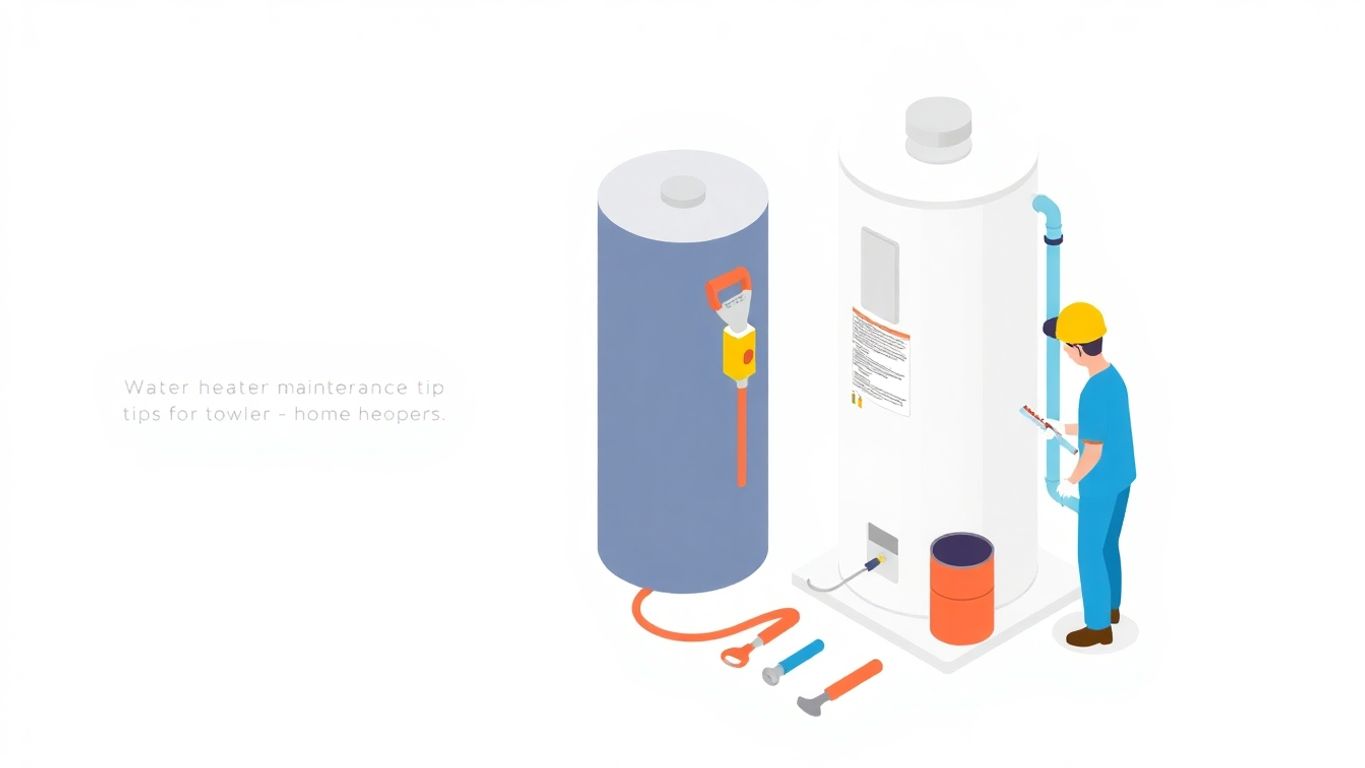
It’s super important to be safe when you’re working on your water heater. Water and electricity don’t mix, and hot water can cause burns. Always take precautions to protect yourself and your home.
Before you even think about touching your water heater, turn off the power. For electric heaters, find the right circuit breaker in your electrical panel and switch it off. For gas heaters, turn the gas valve to the "pilot" or "off" position. Next, shut off the cold water supply to the heater. This stops more water from flowing into the tank while you’re working on it. It’s like hitting the pause button on the whole system.
Hot water can cause burns, and sediment or rust can irritate your skin and eyes. Always wear safety glasses and gloves when working on your water heater. Closed-toe shoes are also a good idea. Think of it as your superhero outfit for water heater maintenance. You might even want to wear old clothes, just in case things get messy.
If you have a gas water heater, ventilation is key. Gas heaters can produce carbon monoxide, which is a dangerous, odorless gas. Make sure the area around the water heater is well-ventilated by opening windows or doors. If you have a carbon monoxide detector, make sure it’s working properly. It’s better to be safe than sorry when it comes to gas appliances.
Working with water heaters can be risky if you don’t take the right steps. Always prioritize safety by turning off the power and water, wearing protective gear, and ensuring good ventilation. If you’re not comfortable doing any of these things, call a professional.
To keep your water heater working its best, you need to do a few things regularly. These steps will help it last longer and use less energy. Let’s look at some ways to boost your water heater’s performance.
Check your water heater often. Look for any problems like leaks or rust. Catching these early can stop bigger issues from happening. Make sure all the parts look like they are in good shape. If you see something that doesn’t look right, get it checked out by a professional. Regular water heater service can help you avoid costly repairs.
Sometimes, replacing old parts can make a big difference. For example, a new anode rod can stop rust. Upgrading to a better temperature and pressure relief valve can also improve safety. These small changes can help your water heater work better and last longer.
Make sure your water heater has the right amount of water. If it’s too low, the heating element can burn out. If it’s too high, it can waste energy. Check the water level regularly and adjust it if needed. This will help your water heater run smoothly and efficiently.
Keeping your water heater in good shape is important. It not only saves you money on energy bills but also prevents unexpected breakdowns. A little bit of care can go a long way in extending the life of your appliance.
Here’s a simple checklist to help you maintain optimal water levels:
You should flush your water heater at least once a year. If your water is very hard, doing it every six months is better.
If you run out of hot water often, see rust on the tank, or notice it’s not working well, you might need to maintain it more often.
Yes, you can do some maintenance tasks yourself, like flushing the tank and checking the pressure relief valve.
The anode rod helps prevent rust inside the tank by attracting corrosive elements in the water.
If your water heater is using more energy than before, or if you run out of hot water quickly, it might not be efficient anymore.
Strange noises can mean there’s sediment buildup or other issues. It’s best to check it right away.
You can improve efficiency by adjusting the temperature settings, insulating the tank, and choosing energy-efficient models.
You should call a professional if you notice serious problems, like leaks or if you’re unsure about how to do a maintenance task.

